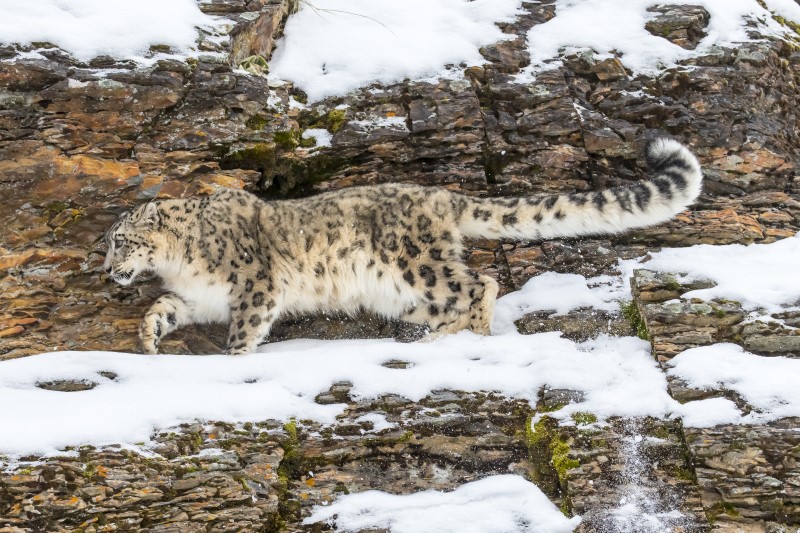Why Are Tigers Endangered? And What Can Be Done to Help
Several factors contribute to tigers being classified as endangered, these include poaching, Illegal trade of tiger parts, loss of habitat, human conflict, and climate change. But before we answer the question “why are tigers endangered?”, let’s learn more about tigers and conservation efforts so you can understand their habitat and environmental needs.
After you read through the information, use the animal report printable listed below or add in these endangered species to make it a study.

The tiger may be the most recognizable of the big cats. Bold, black stripes on an orange background easily set it apart from the lions and panthers.
The Taxonomy of Tigers
Taxonomy is the system by which scientists identify and sort creatures into specific classifications. This system helps scientists keep track of how every creature, both living and extinct, exists in relation to other animals through genetic similarity and physical traits.
The Taxonomy system places species into eight ranks, ranging from most to least general. These ranks are Domain, Kingdom, Phylum, Class, Order, Family, Genus, and Species. If you would like to remember the order of ranks, a funny mnemonic is Danny Keeps Putting Carrots On Fred’s Good Spaghetti.
Though called “The King of the Jungle,” lions are swiftly outmatched in size when compared to tigers. Both lions and tigers are in the family Felidae. Members of this family are also called felid or feline.

There are 36 species of cats in this family. Species in this family live in all areas of the world, except for Australia and Antarctica. They vary in size from the domestic cat to the lion.

- Tigers
- Cheetahs
- Caracals
- Lions
- Bobcats
- Ocelots
- Jaguars
- Leopards
- Snow Leopards
- Margay
- Puma
In the taxonomic family of Felidae, there are two subfamilies known as Pantherinae (big cats) and Felinae (domestic cats).
These subfamilies are further split into several genera (plural for genus), with Panthera being the genus of the species Panthera leo (lions), Panthera pardus (leopards), Panthera onca (jaguars), and most importantly, Panthera tigris (tigers).

Subspecies Of Tigers
Tigers are the largest of the big cat species.
Tigers, for instance, have nine different subspecies. Three of these are now extinct. As of 2021, all existing species are listed as either Endangered or Critically Endangered, with some subspecies such as the Malayan Tiger having only 150 living cats in the wild.
The South China and the Malayan tigers are critically endangered. There have been no sightings of the South China tigers in the wild in several years, so that subspecies may already be extinct. It has been predicted that all tigers may become extinct in the wild within the next decade
. The nine subspecies are:
- Siberian Tiger
- Bengal Tiger
- Indochinese Tiger
- Malayan Tiger
- South China Tiger
- Sumatran Tiger
- Caspian Tiger (extinct)
- Bali Tiger (extinct)
- Javan Tiger (This tiger went extinct in the 1970s.)

Why Are Tigers Endangered?
In the early twentieth century, there were about 100,000 tigers in the wild with 9 subspecies. Now, that number is 3,200 and about 5,000 tigers are in captive populations.
What Makes Tigers Endangered?
Several factors have negatively impacted these magnificent creatures. These include poaching, Illegal trade of tiger parts, loss of habitat, human conflict, and climate change.
Perhaps the most significant factors are poaching and illegal trading of tiger parts. In fact, the extinction of the Caspian and the Javan tiger can be directly linked to hunting.
People hunt tigers for their pelts, teeth, claws, and bones. These items are collected and sold as novelty items; some still use them as a symbol of status. In distant parts of the world, some people use tiger body parts in undeveloped medical practices. Most of these treatment ideas have been tested and discredited by many esteemed scientists.
The demand for tiger parts has led to the development of deeply inhumane places such as tiger breeding farms, which actively breed and slaughter tigers for their parts. The farms were created with the hopes of dissuading poachers from hunting wild tigers, but some of these farms have only increased the illegal trade.
Tigers are large animals that require a lot of land to roam and hunt. They require tall grasses and vegetation to hide in. Tigers, like all animals, need a reliable water and food supply. When these are taken away, tigers cannot survive. Habitat loss, human conflict, and climate change have been attributed to a severe decrease in tigers’ natural habitat range. The human population has tripled since the 1950s. Such a large increase has led to an extreme and severe reduction of tigers’ natural habitat range. Scientists estimate that tigers have lost 85% to 93% of their habitat land.
With a smaller habitat to roam, tigers have become more of a problem for human populations, leading to more lethal confrontations for wild tigers. This has led to farmers killing many tigers to protect their livestock.

Given this combination of factors, it is clearer why tigers are endangered. However, there is always hope from conservation efforts by scientists and support from all of us to help remove tigers out of an endangered status.
Conservation Efforts to Help Endangered Tiger Populations
Numerous organizations such as the World Wildlife Fund, the Wildlife Conservation Fund, zoos and aquariums accredited by the Association of Zoos and Aquariums, and many other organizations help lead the way for tiger conservation.
Conservation programs range from building land bridges across busy highways to give wildlife a safe means of travel, to breeding programs that help grow populations while preventing inbreeding, which helps maintain important genetic diversity.
Other methods include tracking and keeping tabs on tiger populations using cameras, paw print identification, and even tagging individual animals. Through the knowledge acquired by these methods, conservationists can determine the size and healthiness of a tiger population, which educates them on the amount of habitat that will be needed to keep the population healthy and steady while helping people stay safe.
Additional key factors in tiger conservation are on-the-ground protection from poachers through organized enforcement and more strictly followed laws regarding poaching and the smuggling of tiger parts. Some places, such as the Periyar Tiger Rescue in South India, have come to turn poachers into protectors.

In underdeveloped parts of the world, people pursue poaching as a means of steady income. Engaging in this illegal activity can make it hard to escape it. The government body surrounding the Periyar Tiger Rescue came up with a program that would guarantee outstanding charges be wiped clean if the poachers would commit to protecting the very species they had been hurting.
Thus far, their program has been very successful. Hopefully, more places can adopt similar policies to help end poaching.
What Can We Do To Help Endangered Tiger Populations?
There are many ways in which we can all help contribute to the conservation of tigers and many more endangered species. One of the best ways is to educate yourself about tigers, protection, and endangered species by reading articles such as this one and many others provided from trusted sources such as The World Wildlife Federation or National Geographic. Another way to help is to go out and share your knowledge with your family, friends, classmates, and others because knowing about an issue is the best way to help address it.
Help support conservation efforts by visiting your local AZA-accredited zoo, found here.
Other ways of supporting conservation efforts include raising money and donating to conservation funds and efforts. There are many ways to raise funds, such as asking for donations in place of birthday gifts, holding a bake or yard sale, recycling cans for change, and many other creative ways you may think of to raise money! Some good funds are listed below:
Another vital aspect of helping conservation efforts is by trying our best to use and promote ethically sourced products. Deforestation is another critical issue endangered tigers and other threatened species face. Palm oil is a commonly used product harvested from the many beautiful palm trees that make up a large portion of tigers’ natural habitat. By drawing our support from products that rely upon palm oil, we can help decrease the threat of deforestation. The World Wildlife Federation lists products to avoid which use palm oil.
So, now you can share with family and friends information about what makes tigers endangered and how we all can help.
Interesting Facts about Tigers
- While Siberian Tigers are the largest subspecies, Sumatran tigers are the smallest species
- Speaking of Sumatran tigers, that subspecies only exists on one island in Indonesia called Sumatra. They are often easy to tell apart from other tiger species due to their pronounced beards and manes
- Although beautiful, white tigers result from a recessive gene and only occur during instances of inbreeding. Many white tigers have genetically related health issues
- Tigers have a bite force of approximately 1,050 psi (pounds per square inch), which is nearly double that of lions with a bite force of 650 psi. Humans only have a bite force of around 126 psi.
- Unlike many beloved house cats, tigers love the water and are adept swimmers. Tigers are known to be able to swim up to nearly 20 miles in a single day
- Male tigers tend to have territories that span from 60 to 100 square kilometers (37-62.1 square miles)
- Though they are mostly solitary creatures, a collection of tigers is known as either a streak or ambush of tigers
- Tigers can run anywhere from 30-40mph
- The stripes of a tiger are just as unique as our fingerprints; no two are alike. Plus, you can see their stripes even down to their skin
- The type of fur pattern they have is called “disruptive coloration” by scientists. This type of camouflage works by breaking up the outline of an animal through an uneven color pattern, giving them a more natural appearance, which helps them blend in with their environment
- Scientists think tigers are orange because many prey species, such as deer, are colorblind to the color red. Thus, orange appears green to the colorblind animals.
- Tiger fangs are anywhere from 2.5-3 inches long.
- Their claws grow to be around 4 inches in length and are used not only for hunting but for marking their territory by scratching trees (similar to how house cats scratch furniture).
Receive our Animal Report printable pages to research and journal what was learned!
Learn More About Tigers
- National Geographic Kids
- All About Wildlife
- Tigers World
- World Wildlife Fund
- Tiger coloring pages
- Learn to draw a tiger
Now that we’ve learned much about what makes tigers endangered, learn about other endangered species and what is being done to save them.
Books and Other Resources:
I hold a master’s degree in child development and early education and am working on a post-baccalaureate in biology. I spent 15 years working for a biotechnology company developing IT systems in DNA testing laboratories across the US. I taught K4 in a private school, homeschooled my children, and have taught on the mission field in southern Asia. For 4 years, I served on our state’s FIRST Lego League tournament Board and served as the Judging Director. I own thehomeschoolscientist and also write a regular science column for Homeschooling Today Magazine. You’ll also find my writings on the CTCMath blog. Through this site, I have authored over 50 math and science resources.





